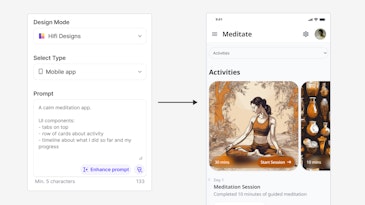In the world of digital design, something big is happening. It's not loud or flashy, but it's definitely changing the game. And guess what? AI, or Artificial Intelligence, is right at the heart of this change.
AI isn't just about cool new tools. It's transforming the way we think about design from the ground up. We're moving towards an era where AI-driven creativity opens up a whole new world of possibilities.
Leading this exciting change are two big names: FigJam and UX Pilot. Each has its own way of making design work smarter, not harder. FigJam is all about keeping things simple and collaborative, making it easier for teams to brainstorm and sketch out ideas together.
Then there's UX Pilot. It dives deep into user data, using AI to uncover insights that are precise and incredibly useful for tackling complex design challenges.
This post isn't just a rundown of these tools. It's about understanding what they bring to the table and figuring out which one might be the future star of digital design. So, if you're all about crafting UX Maps with AI, you're in the right place.
Let's dive into how AI is reshaping design, and empowering creatives to meet the sophisticated needs of today's digital world.
The Rise of AI in Design Tools
Ever wondered if AI in design tools is just a fancy trick or if it changes the game?
Well, AI is shaking things up in the digital design world, moving from a cool add-on to the heart of the creative process. This isn't just a small step; it's a giant leap into a new age where AI blends with creativity to break new ground.
Think of AI not just as a tool but as a team member who brings a fresh perspective to your projects. This integration of AI is turning the tables, making design smarter, faster, and more intuitive. It's a thrilling time to be in design, with AI opening up paths we've only dreamed of.
Want to dive deeper into how AI is transforming UX design? Check out this insightful piece on AI tools for UX design. It's clear AI in design isn't just here to stay; it's here to lead the way.

Key Highlights of AI Integration in Design Tools
Revolutionizing Creative Processes: AI is flipping the script on design. Instead of sweating over the small stuff, designers are now diving deep into creativity and strategy, thanks to AI taking care of mundane tasks. Imagine having more time to dream up big ideas because AI's got your back with the routine work.
Boosting Collaboration
AI-driven tools are not just tools; they're like the new team members who suggest tweaks, offer new ideas, and help predict how designs will perform. This AI insight powers up team efforts, making the design process more about innovation and less about guesswork.Unlocking New Insights: With AI's help, diving into vast datasets to understand user behaviours and preferences becomes a breeze. This means designs can be more than just pretty—they can be smart, and tailored to what users need and want.
Balancing Creativity and Data: AI does the heavy data lifting, allowing designers to stay focused on the creative vision. It's like having a superpower that crunches numbers and analyzes data, so the human brain can stay in the realm of creativity.
Promising Future Advancements:
AI in design is just getting started. As AI tech gets smarter, expect even cooler tools and processes to come our way, making the future of design a thrilling space to watch.
The Comparative Test: FigJam vs. UX Pilot
When it comes to choosing AI design tools for mapping out user experiences like flowcharts and sitemaps, we took a closer look at FigJam and UX Pilot. We did a head-to-head of both tools and the results were astonishing. But first, let's get a quick overview of both design tools.
FigJam: A Collaborative Design Platform
FigJam, coming from the folks behind Figma, is making waves as a go-to for designers seeking a shared space to bring ideas to life. It's all about ease of use and teamwork, with features that make collaborating on designs a smooth process.
Key Features of FigJam:
User-Friendly Interface: Easy enough for anyone to jump in and start designing.
Enhanced Collaboration: Teamwork is real-time here, making it easy to share and refine ideas together.
AI-Driven Ideation: Boosts creativity and helps visualize concepts during brainstorming.
Simplifies Flowchart and Wireframe Creation: Essential for quick and efficient design planning.
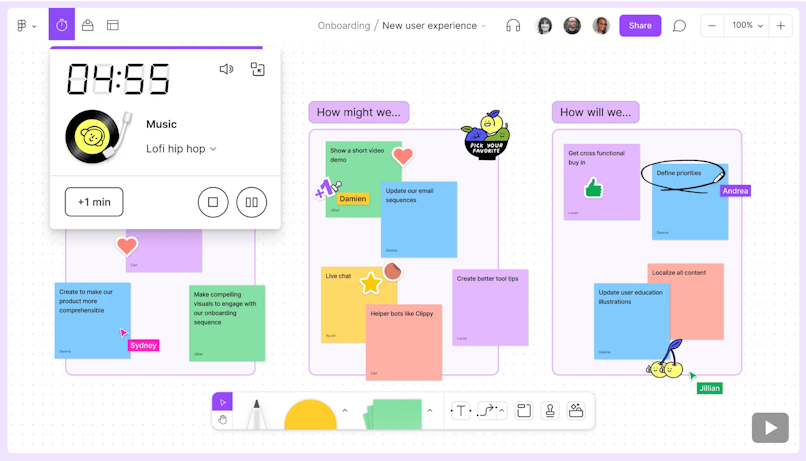
UX Pilot: Precision-Driven Design Innovation
UX Pilot is at the forefront, transforming the UX design process with its advanced AI capabilities. This tool has quickly become a favourite among professionals, with over 10,000 users from top companies. It's not just about making things easier; it's about redefining the entire design journey from start to finish.
Highlighted Features and Benefits:
AI-Based UX Design Review: This feature is a game changer. Users like Tibi David rave about how it's boosted conversion rates through sharp, actionable insights.
Effortless Workshops with AI: Jeremy Miller and many others find the workshop facilitation tools, including a vast template library and a custom workshop generator, to be absolute game changers, boosting confidence and streamlining the process.
From Text to Insight: UX Pilot shines in transforming text into valuable insights, aiding in ideation and project definition with unmatched precision.
Seamless Figma Integration: The integration with Figma & FigJam is slick. It streamlines the design process, allowing for a more cohesive workflow without the need to juggle between tools.
Comprehensive Design Process Support: UX Pilot covers all bases, from the initial project kickoff to crafting a style guide, generating wireframes, high-fidelity UI designs, and even responsive code, speeding up the design journey.
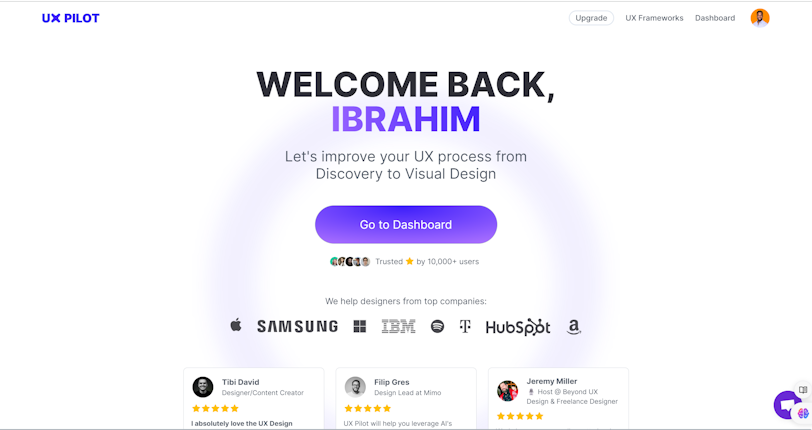
The Flowchart Design Challenge
We gave both AI tools a comprehensive prompt to create a flowchart detailing the online shopping journey, from discovery to confirmation. The aim was to observe how well each tool could interpret and visualize the sequence of actions a user takes when shopping online.
This is the prompt:
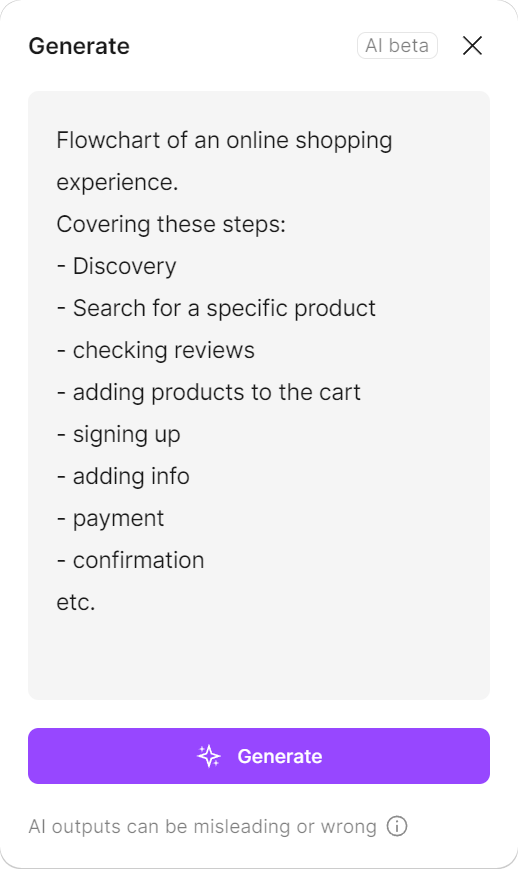
FigJam's Attempt: Figma produced a neat, straightforward flowchart that captured the shopping process but only skimmed the surface. It seems FigJam chose to keep its AI use simple, aiming for clarity over depth. This made for a clean visualization, though it lacked the detailed exploration of the user's journey, hinting at a balance between usability and comprehensive insight.

Then we fed the same prompt to UX Pilot:
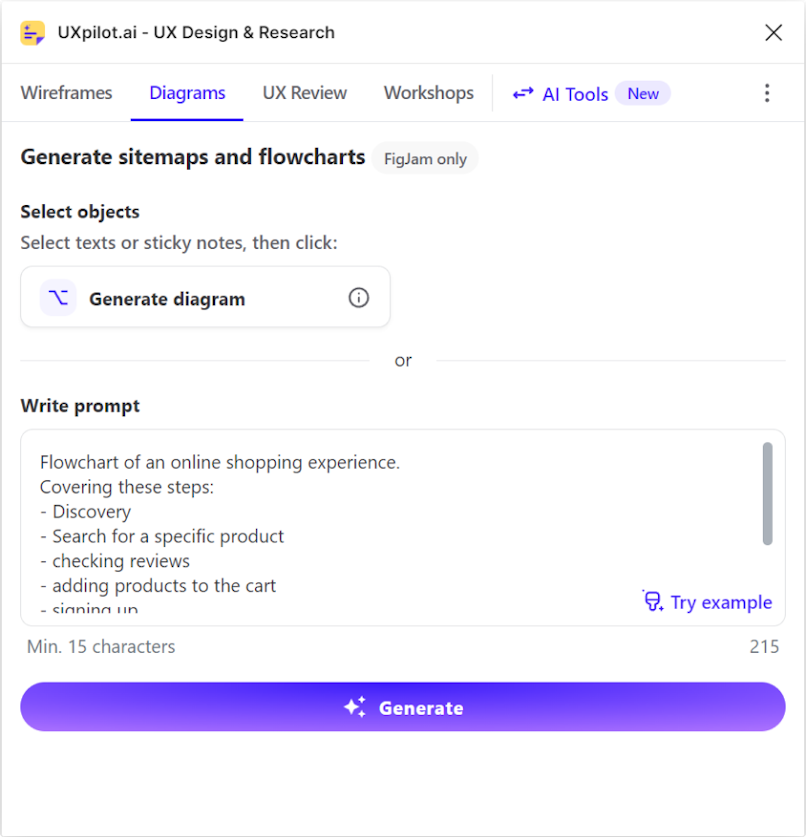
UX Pilot's Turn: UX Pilot's response initially seemed to mirror FigJam's simplicity. However, upon closer inspection, UX Pilot unveiled a depth FigJam didn't. It captured shopping nuances with precision. This subtle yet significant detail showcased UX Pilot's strength in utilizing AI to dive deeper into the user experience, offering a more intricate and insightful visualization of the shopping process.
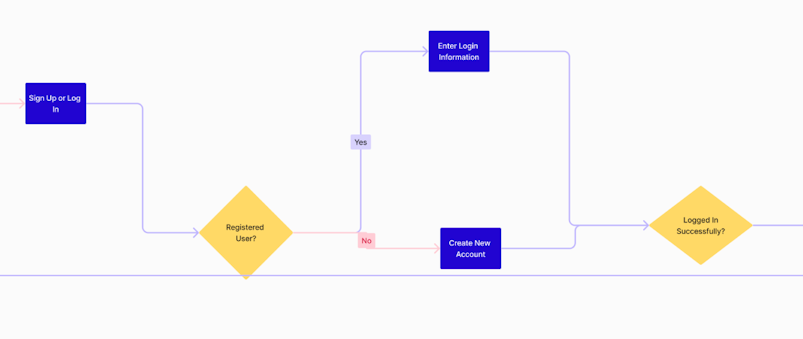
Flowchart Verdict: The face-off revealed UX Pilot's slight edge, offering a flowchart with more depth and detail, proving its prowess in managing complex designs, though both tools excel at basic tasks.
The Sitemap Design Test
Next up, we wanted a sitemap for an e-commerce site for UX designers. FigJam took a crack at it first, tasked with organizing a site for this niche market.
We fed this prompt to FigJam:
"Sitemap of an e-commerce website selling to UX designers"
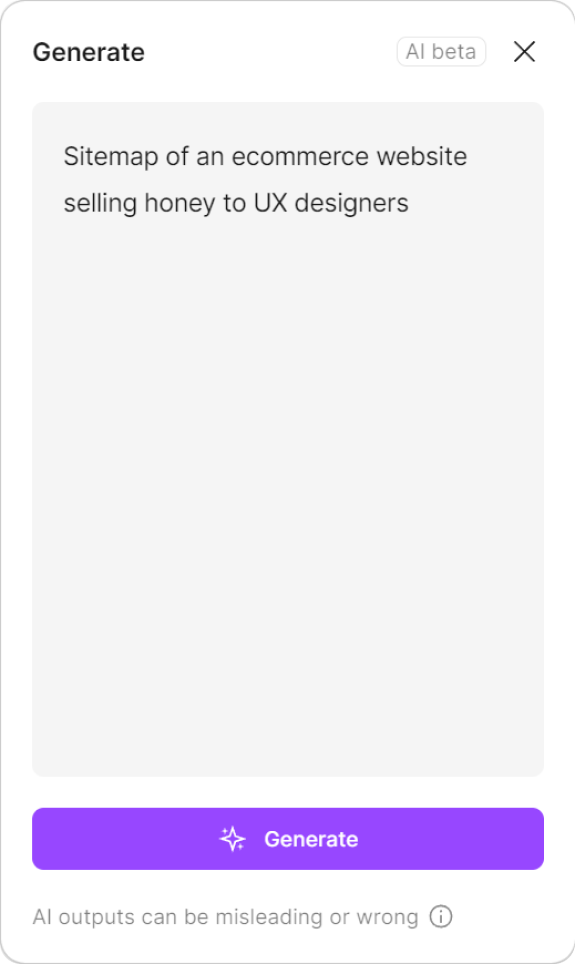
FigJam's Response: FigJam's attempt to create a sitemap for an e-commerce site aimed at UX designers didn't go as planned. Despite the clear task, it kept reverting to a flowchart style, missing the mark on our sitemap request. This problem suggested a possible gap in FigJam's versatility, showing a challenge in adapting its output to fit different design needs.

The same prompt was given to UX Pilot
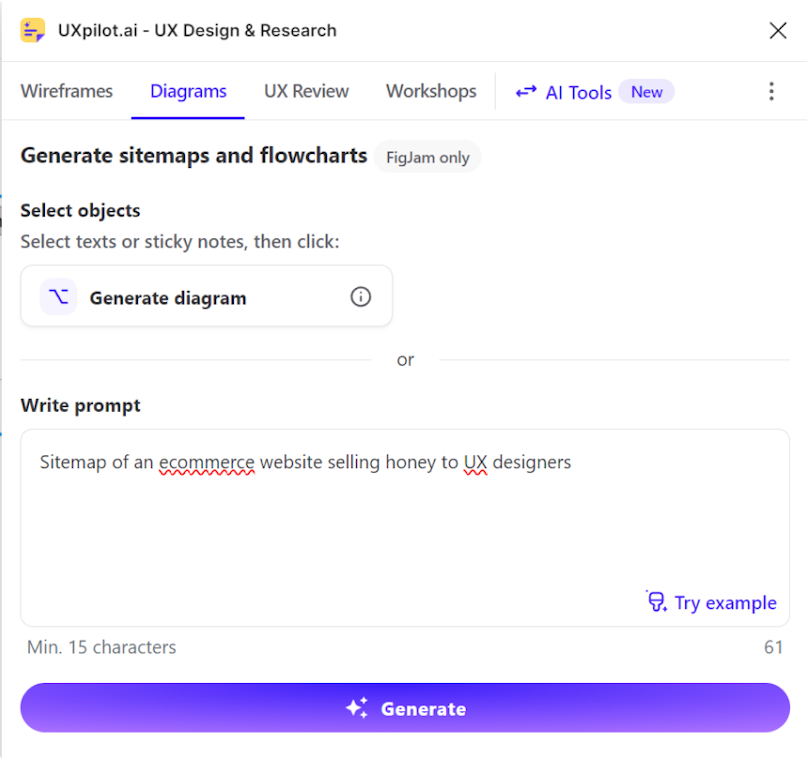
UX Pilot's Performance: In contrast, UX Pilot tackled the sitemap creation with ease, producing a detailed and well-structured sitemap that mirrored the expertise of a seasoned UX designer. The depth and clarity of its output were notable, highlighting UX Pilot's strong capability in grasping and executing complex design briefs with precision.
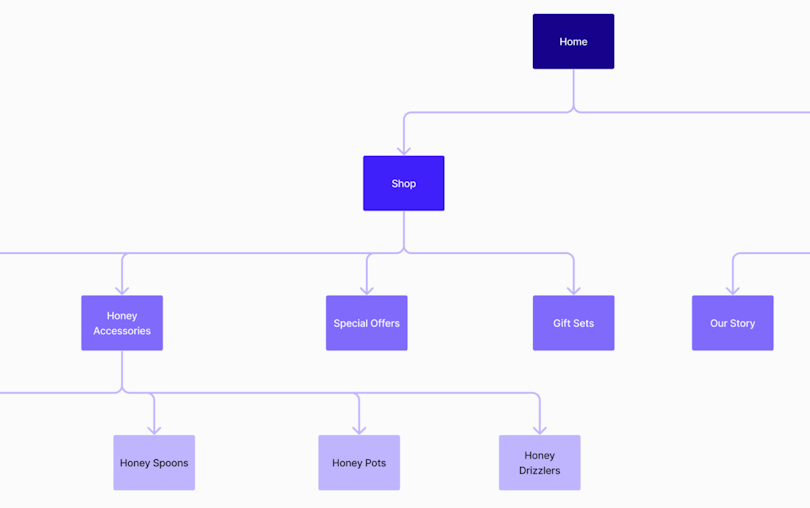
Sitemap Verdict: UX Pilot shone in the sitemap creation, showcasing its standout capabilities in handling detailed projects with depth and precision.
Reflecting on Our Tests: Our journey comparing FigJam and UX Pilot illuminated the unique strengths and improvement areas of each tool.
UX Pilot, especially with its sitemap prowess, emerged as a robust ally for designers seeking comprehensive capabilities. Its free trial beckons those ready to explore its full potential.
As we fold these tools into our design processes, choosing between FigJam and UX Pilot hinges on the task's complexity and the required detail level, guiding designers to the most suitable tool for their project.
The Importance of AI in UX Design
AI's role in UX design transcends technical upgrades, marking a new era in crafting digital experiences. It's not just a sidekick; AI is at the forefront, redefining the essence of intuitive and impactful interfaces, tailored to meet and exceed user expectations.
Deep User Understanding: AI dives deep into data to reveal user behaviors and preferences, allowing for the creation of personalized experiences that go beyond generic solutions.
Intuitive Design Personalization: AI's personalization prowess ensures every interaction is tailored, significantly boosting user satisfaction.
Insight-Driven Design Decisions: With AI, extensive user data transforms into actionable insights, leading to decisions that are both beautiful and grounded in solid data.
Adaptive Interfaces: AI enables interfaces to adapt in real-time, refining the UX continually for more seamless and responsive designs.
Predictive Design Innovations: AI's predictive capabilities allow designers to stay ahead, crafting innovations today that meet tomorrow's user needs.
AI isn't just changing the game; it's redefining it, offering unparalleled opportunities for creating interfaces that truly resonate with users.
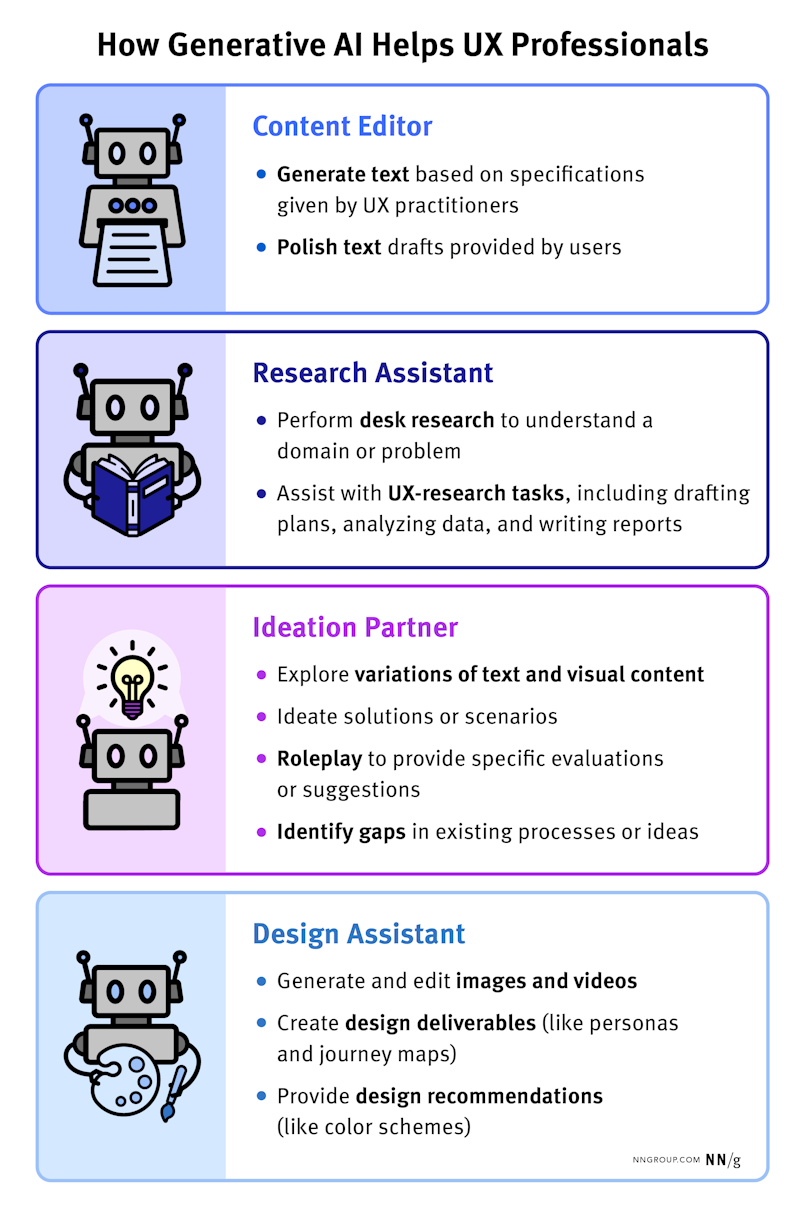
Basically, AI in UX design is revolutionizing how we create digital experiences, focusing on functionality, beauty, and user empathy. It's about turning every digital interaction into an opportunity for connection and delight.
The future of UX design, fueled by AI, is heading towards intuitive and personalized designs that blend seamlessly into our daily lives, making technology an enriching part of the human experience.
Making the Choice: FigJam vs. UX Pilot
Our journey through FigJam and UX Pilot's landscapes reveals the future of AI in design. FigJam excels with its user-friendly interface, perfect for teams that thrive on collaboration and real-time creativity. UX Pilot, on the other hand, offers deep, data-driven insights, making it ideal for projects that require a meticulous, detail-oriented approach.
Your choice between them should align with your project's needs: For depth, detail, and data, UX Pilot is the go-to, guiding your designs with precision and creativity.
Conclusion
Exploring AI's expanding role in design through tools like FigJam and UX Pilot showcases a shift towards designs that are both intuitive and centred around user needs. These tools embody the fusion of creativity and technology, aiming for efficiency and a deeper understanding of users.
UX Pilot stands out for designers looking to explore the depths of their craft, offering a blend of data analysis and creative design. It's a tool for today's designers and tomorrow's innovators, showing how AI can redefine our digital landscapes.
Unlock UX Pilot's potential by signing up for a free trial. Experience firsthand how it can refine your design process, elevate your projects, and expand the possibilities of digital design.
Begin your innovative design journey with UX Pilot.

